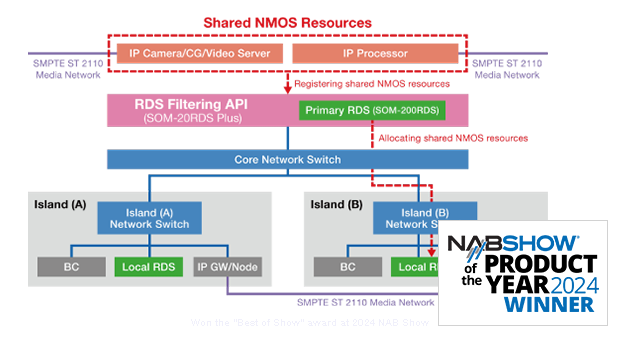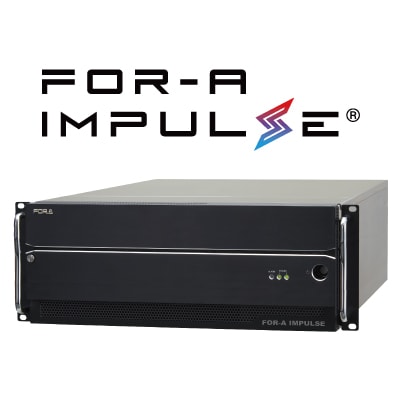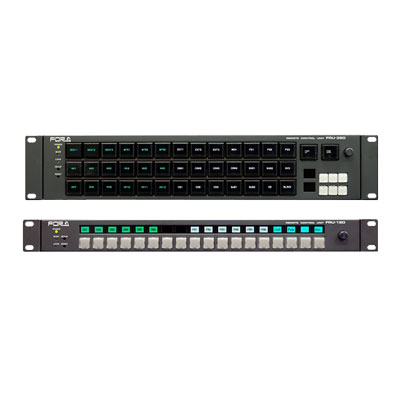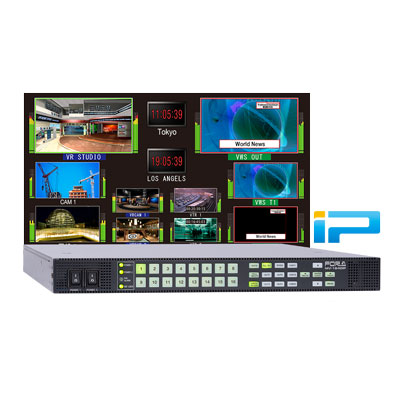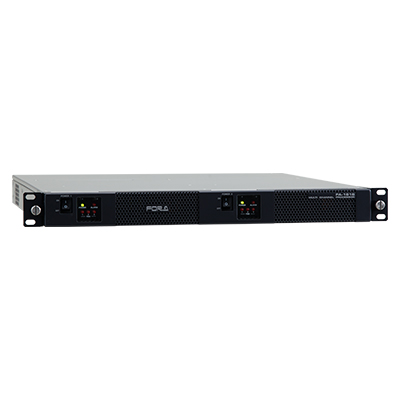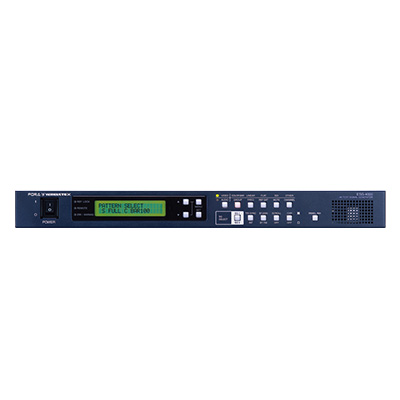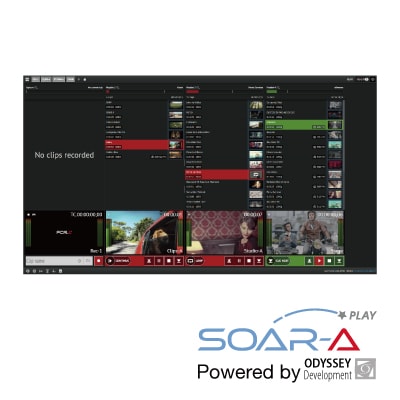Hi-RDS (Hierarchical RDS) realizes efficient system operation and equipment utilization in MoIP systems constructed using SMPTE ST 2110/NMOS.
Hi-RDS enables resource sharing among multi-vendor islands, which was difficult using a conventional system. Hi-RDS reduces the amount of equipment required and improves operational efficiency.
Demo Video
Key takeaways
- Realizes effective resource sharing to reduce the workload
By simplifying the operation of sharing resources allocation beyond an isolated island, significantly reduces the workload for system configuration modification.
- Virtualization of shared resources to use devices efficiently and reduce cost
Virtualizes devices, and divides them into Sender/Receiver units. Nodes are created by combining necessary Sender/Receiver units, and each node can be used in different islands. It realizes the highly efficient use of devices and a reduction in the number.
- Implementation possible without any modification on existing system
Beyond a multi-vendor island, Hi-RDS is accessible without any modi cation, so that shared resources can be used from any island with schedule management software. This avoids any conflict of use.
Realize effective resource sharing to reduce the workload
In a typical RDS (Registration and Discovery System), a Node can only be used in one local RDS. And each time it is used in another island, Node destination must be changed individually. When the number of devices is large, it can be time consuming to change the registration. With Hi-RDS, there is no need to change Node registration destinations when the island is changed, making it much more flexible with different workflows.
MoIP system with Hi-RDS
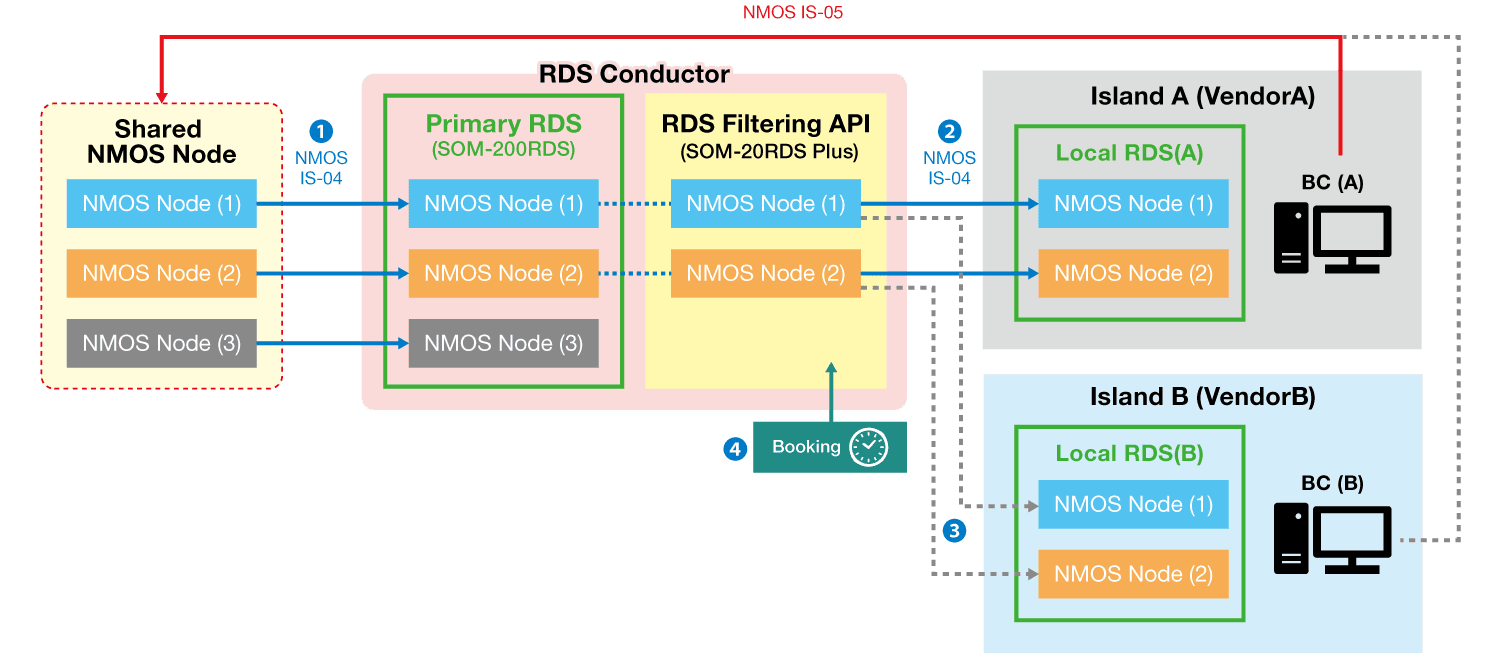
1. To register a shared device for use by more than one subsystem, first register it to Primary RDS by IS-04.
2. Use an RDS filtering API to register the device in Primary RDS to Local RDS of the subsystem to which you want to assign it by IS-04.
3. SOM-20RDS Plus assigns to other islands without manually changing the device's settings when the island is changed.
4. The decision to assign an RDS filtering API to when and where refers to data from the booking system.
Virtualization of shared resources to use devices efficiently and reduce cost
NMOS device is managed in Node > Device > Receiver/Sender step structure. By dividing the original Node and creating a virtual Node that contains only the required Receiver/Sender and registering it in Local RDS, one piece of equipment can be used in several subsystems with differing RDS. By segmenting the functions of equipment and distributing them to the necessary locations, the amount of equipment is reduced. It is also possible to create a set that collects multiple virtual Nodes and operates accordingly. When a virtual NMOS Node is created, Label/Description can be changed, and the virtual Node can be named differently depending on the subsystem when using the same device as multiple devices or when assigning to multiple subsystems.
Virtual NMOS Node workflow
By virtualizing and segmenting a Node with an RDS filtering API, the same device can be used in two or more islands at the same time.

Implementation possible without any modification on existing system
It can be difficult to expand MoIP systems if it is not designed with the whole system in mind initially, as vendors and introduction years can fluctuate. Hi-RDS can be introduced regardless of the vendor or year of introduction of the system, because it utilizes the originally established system.
Implementation of a multi-vendor system
Example of multi-vendor system using Hi-RDS and FOR-A products.
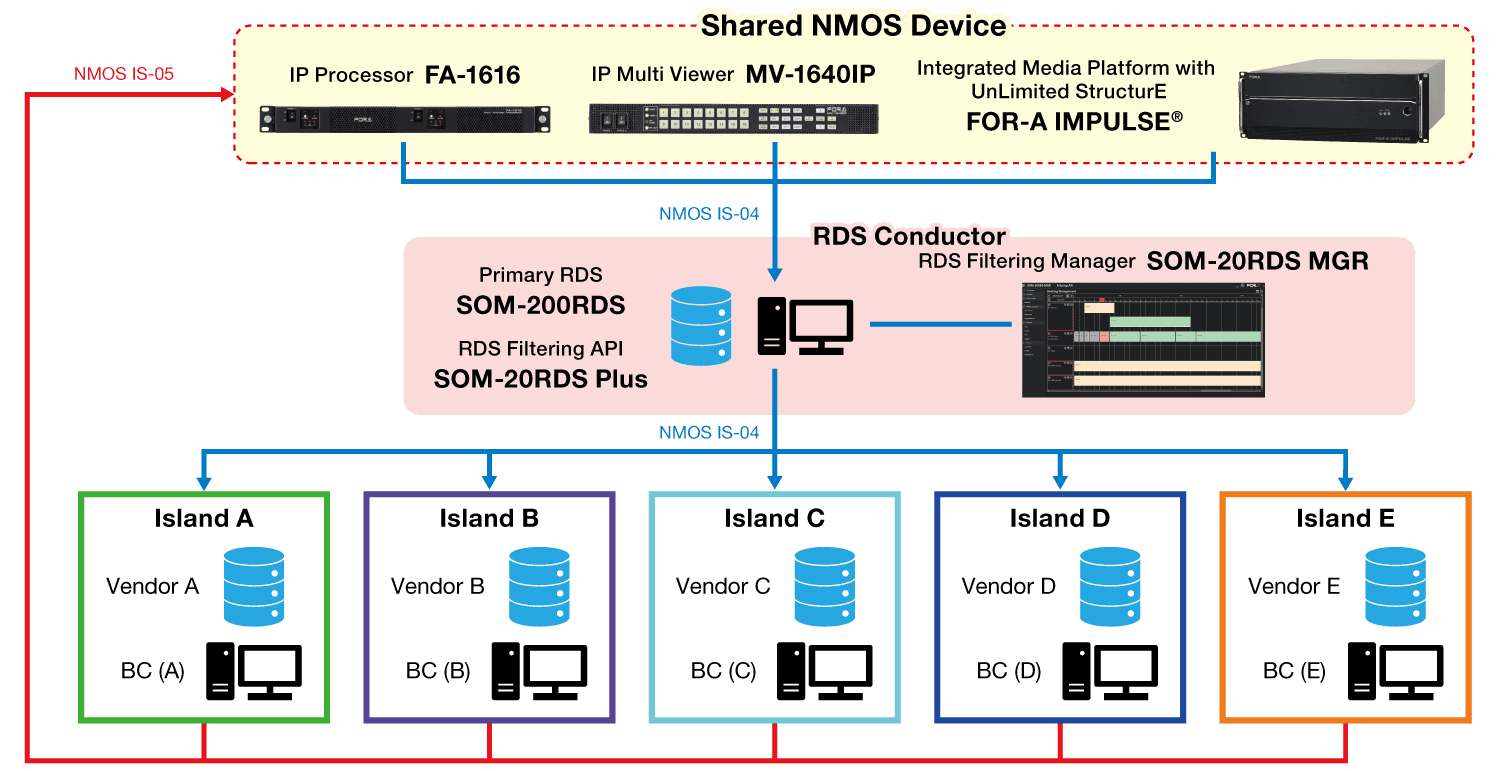
© 2025 FOR-A Company Ltd. FOR-A IMPULSE is registered trademark of FOR-A Company Ltd.
RDS Conductor Lineup
SOM-200RDS - NMOS RDS Software
Software that provides NMOS RDS functions. Supports redundant configurations and provides Linux and Windows versions as appropriate. Combination with BC enables easy construction of MoIP system. Combined with the optional SOM-20RDS Plus, Hi-RDS can be built.
SOM-20RDS Plus - RDS Filtering API option
Software that has a RDS filtering API function and enables sharing of NMOS devices between facilities. Easy construction and operation of Hi-RDS systems with SOM-20RDS MGR.
SOM-20RDS MGR - RDS Filtering API management software
-
Software that implements the functions required for the construction and operation of a Hi-RDS system.
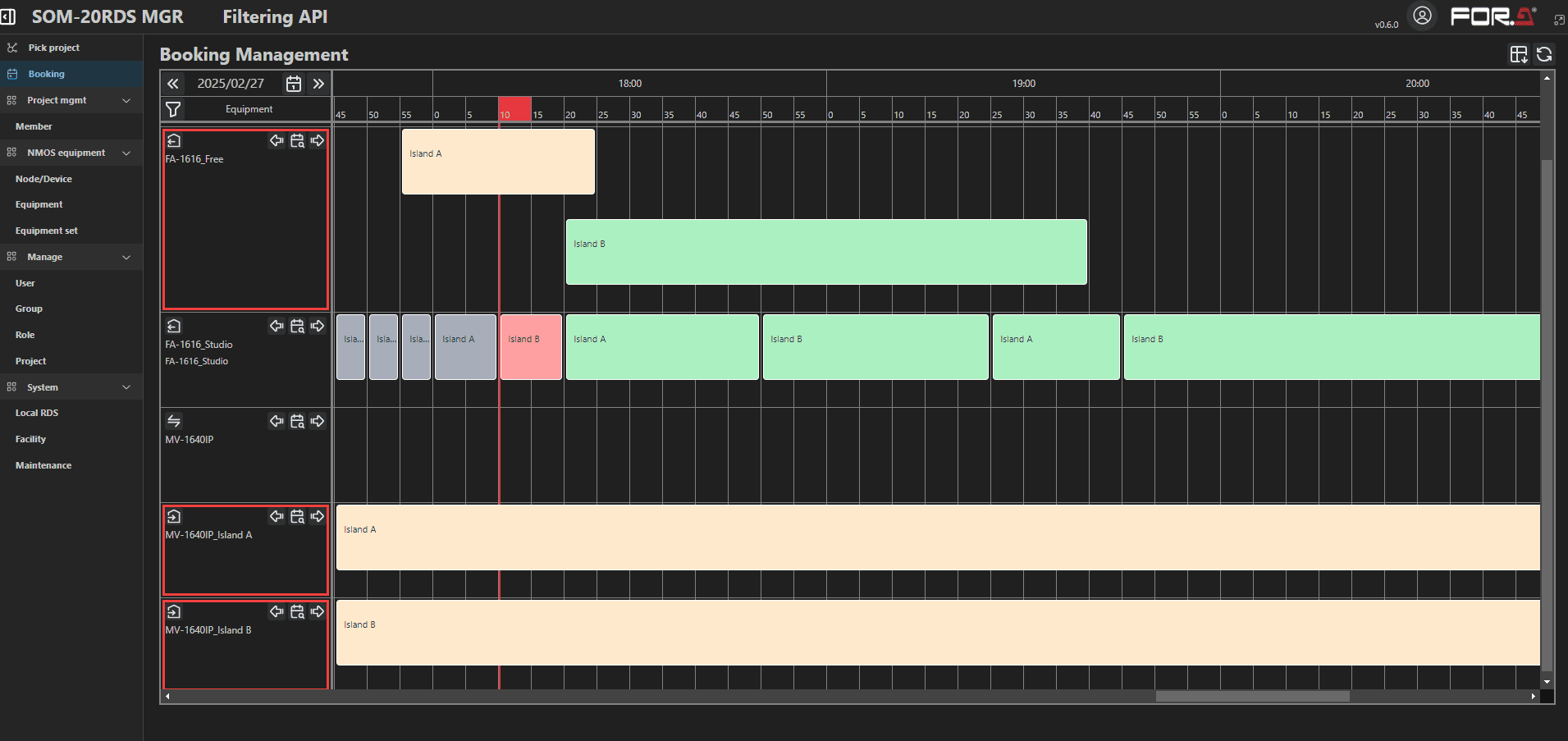
SOM-20RDS MGR Features
- Create Virtual Node
By dividing the original Node and creating several virtual Nodes, one Node can be registered in several RDS. - Addition/change of Label/Description
Label/Description can be rewritten at Sender/Receiver when virtual Node is created. - Set creation
A set of multiple virtual Nodes can be created. - Reservation management
Reserve rental of virtual Nodes and sets to RDS. Supports booking usage checks and enables efficient use of NMOS devices.
